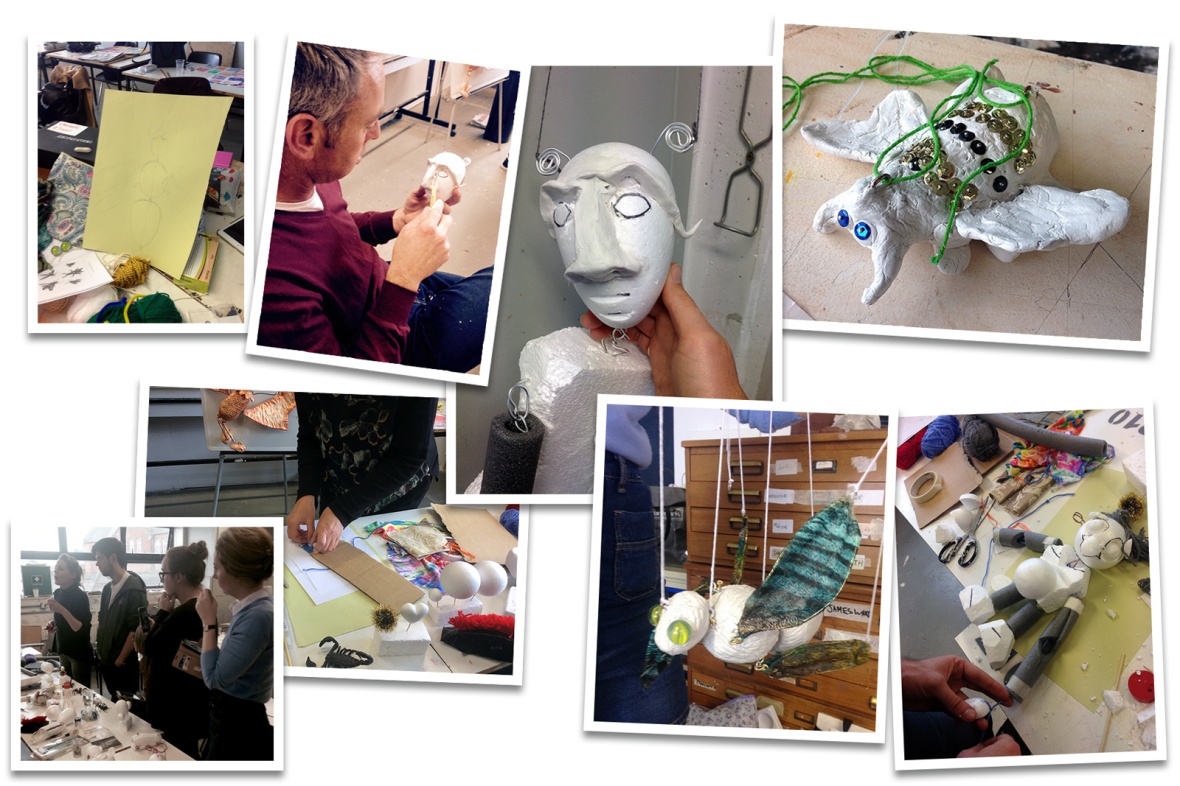Peer teaching is central to professional development. Collaborative learning and sharing of experiences, practises, resources and ideas is essential to develop one’s own teaching practise.
Puppetry is a valuable element in the visual arts curriculum and my specialist knowledge on materials and resources were presented through a workshop and digital presentation to MA students in the Professional Masters of Art and Design Education programme.

Peer Teaching – Puppet-Making class
Teaching puppetry in the classroom
Puppetry has always been of great interest to me as it a way to bring people together to make art, build community, tell stories, and encourage the imagination and creativity of young people. Puppetry is unusual as it is a combination of theatre arts, visual arts, storytelling, and often times music. This art form, with rich histories spanning across various cultures, has transforming effects on students engaged with the art form.
Teaching puppetry in the classroom is so varied, as to include the writing the script, building the puppets, props, and stage, practicing, and performing. I as an art educator and a life-long learner, always wish to build my skills, techniques and confidence in the craft, and to improve art students experiences in puppetry arts. Puppetry stimulates higher-level thinking, as students have to solve many problems when planning how to visualise, research, design and create puppets, and how to stage their show. Students need also to be conscientious of both the aesthetics of the puppets and props and also their functionality, or how well they will be able to perform with them. From experience I have developed a simple technique of building the puppet heads from air-dry clay over Styrofoam, making them light weight and easy to manipulate. This technique gives students the joy and the freedom to realise their own ideas as unique forms of art in what ever materials they have available. Students have the opportunity to take ownership and pride in their work and also a sense of accomplishment in performing.
As an art educator I have a strong philosophy related to community involvement, and puppetry gives me the opportunity to explore issues within the classroom . What mades a performance a piece of artistic mastery is not only the amazingly crafted and manipulated puppets, but also the content of a performance which can explore the inclusion of social justice issues in the classroom, such as racism, bulling, violence, forgiveness, and atonement. Puppetry can build on the construction
techniques that scaffold the collective creativity of cooperative learning. Puppetry is a dynamic tool for developing language communication skills with both students and teachers. For me puppetry means creating a self-contained world full of low-tech magic and wonder.

Making heads – Peer Teaching Puppet making class
Here’s a short video clip of me giving a wiring demonstration as part of the peer teaching session.
Powerpoint visual aid as part of the peer teaching session.

Leaving Certificate Craftwork Marking Scheme for Puppetry